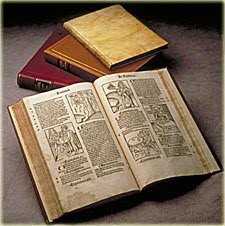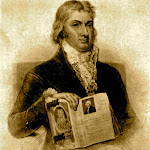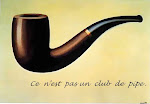Wednesday, December 3, 2014
‘How the Occult Saved Rock and Roll’
My review, in the December issue of The Working Tools magazine, of Season of the Witch: How the Occult Saved Rock and Roll by Peter Bebergal and published by Tarcher/Penguin.
A significant anthropological weight is found in the pages of Peter Bebergal’s new book, Season of the Witch: How the Occult Saved Rock and Roll. Naturally, the thesis lends itself to all kinds of potential exploitation—of which there are ample risks in the art of the dust jacket, with its headshots of David Bowie, Ozzy Osbourne, and Jimmy Page surrounded by various op-art and mystical geometric designs—but the author adheres to a factual chronology of impressive scope. It is worth noting Peter Bebergal’s explanation of what inspired his work; I imagine readers age 40 and up can only smile and nod in remembrance and approbation.
“In 1978 my older brother had just joined the Air Force, leaving me access to the mysteries of his room. Some other secret thing was beckoning. I had caught glimpses when I heard the music coming from his room, so different from my own small collection of Bay City Rollers and Bee Gees 45s. The record collection was a lexicon of the gods: the Beatles, Led Zeppelin, David Bowie, Arthur Brown, King Crimson, Hawkwind, Yes, Black Sabbath, and Pink Floyd.”
Then in six chapters of cogently organized narrative, albeit from secondary sources, Bebergal renders both a history of rock music and a quick study of alternative religions and occultism. As he puts it: “I also hope to reveal that these musicians are human after all and their magical and mystical aspirations are a microcosm of a greater American spiritual hunger.”
We know what rock and roll is, but the term “occult” poses a challenge because of its true definitions and popular usages. From Western Mystery Traditions to witchcraft, and from Eastern faiths to New Age practices, the word is an abused catch-all, which is unfortunate, but the author sticks to a clear meaning without judgment: “A set of practices and beliefs—some stretching back to antiquity, others of a more recent vintage—that attempt to understand reality (spiritual or otherwise) in a way traditional religious practice cannot or chooses not to explore.” That established, Bebergal decodes the varied clues found in the recorded music, packaging art, and live performances of rock and roll bands that have been so important to so many. Freemasons and music fans can delight in seeing the intersections of favorite songs and spiritual paths.
Speaking of intersections, perhaps the legendary crossroads where bluesman Robert Johnson was said to have made his Faustian deal is the starting point, but while Johnson’s meeting with the devil is the best known, it is merely a landmark in a trans-Atlantic journey. The flow-chart begins with Africa before and during the slave trade where, the author explains, “the power of the spirit world is most dramatically revealed in the African traditions that allowed the faithful to be overtaken—possessed—by the gods. Percussion and dance are the means by which the spirit reveals itself, and since each spirit had its own name and personality, the style of dance is a clue as to which spirit had manifested. The shouting and dancing are a result of the worshipper being ‘mounted by the god.’ When the deity inhabits the person, his or her own identity is subsumed.” Having a more direct relationship to the subject at hand is Eshu, “a West African Yoruba god” who can bestow supernatural powers on a musician. Evolving in Haiti is Papa Legba, a deity in the vodou tradition. The imposition of Christianity upon slaves from Africa led to the transformation of these figures to the devil of Western belief. Simultaneously, as the slaves in the New World were prohibited from using drums, percussion was provided by clapping hands and stomping feet, while singing embraced complementary cadences, most notably the back-and-forth of “call and response” and The Shout. Such musical expression was one limited measure of freedom permitted to slaves, but it would produce a global popular culture of shed inhibitions and uncontrolled creativity. The midwife was, of all things, Christianity.
“The post-Civil War African-American churches saw the devil everywhere,” Bebergal explains. “Secular music and dancing were particularly questionable. But in an effort to keep the devil at bay, congregations still used the methods of worship adopted by slaves, what the historian Eileen Southern calls ‘the hand clapping, foot stomping, call-and-response performance, rhythmic complexities, persistent beat, melodic improvisation, heterophonic textures, percussive accompaniments, and ring shouts.’” The author does note the irony of how these musical releases of religious zeal managed to migrate to white people’s churches. For brevity, it is necessary to fast forward to the 1950s, when Elvis Presley first appears on The Ed Sullivan Show, and the director had to censor the singer’s carnal gyrations for fear of corrupting American youth. At issue for the author actually is the irony of how the Pentecostal Church—an offshoot of which was the Presley family’s church—led the charge against Elvis and his music, while Pentecostalism is known for its own music, dance, and speaking in tongues to make a direct connection to God. “The devil should not be allowed to keep all this good rhythm,” one Pentecostal leader is quoted saying. For his part, Presley would explain in interviews how the church protests against him, which included public burnings of his records, were senseless since his music was inspired by the church worship of his youth. Concurrently, Little Richard, a Seventh-day Adventist, excelled in a flamboyant showmanship that made Presley’s sensuality look sleepy.
Of course the title of this book is lifted from the Donovan song released in 1966. The Scottish singer is best known as a folkie who crafted catchy pop songs, but this tune has a dark countenance flavored with a pre-Christian paganism and a hypnotic rhythm. Years later, he would call it “Celtic-rock.” Led Zeppelin would make the most of this theme, producing music both of primal 12-bar blues and elegant acoustic tones with lyrics evoking “Tolkien, Arthurian lore, and Celtic mythology” all presented to the listener in packaging that employs esoteric symbols. It wasn’t a veneer of pretense; this is the band which the author described in a recent radio interview as “the 800-pound gorilla” to be reckoned with when examining occultism in rock music. Guitarist Jimmy Page ostensibly was a follower of Aleister Crowley, collecting rare books authored by the infamous mystic, and even purchasing a mansion Crowley once had owned. If you have an old LP of Led Zeppelin III, look for the Crowley quote inscribed in the lead-out area of the vinyl. Rosicrucians of all stripes could have an appreciation for the title of Zep’s fifth record, Houses of the Holy. And of course an entire chapter could be written about the untitled fourth record—the one with “Stairway to Heaven;” the one with gatefold art unquestionably borrowing from the Hermit card of the Rider-Waite tarot deck; and the one labeled with runes, one chosen as a personal symbol by each of the four band members.
Most readers attracted to this book probably would know that already. Season of the Witch provides more that probably is less celebrated. Theatric singer Arthur “god of hellfire” Brown employed make-up, wardrobe, lighting and props on stage that the author likens to initiation into a magical order, like Golden Dawn. Hawkwind, more of an English eccentricity than a major act that filled football stadiums, excelled in music and live performance that evoked “science-fantasy mythology.” Their second album’s songs “tell tales of journeys into the psyche.” Sun Ra, the avant-garde composer and bandleader, fashioned a musical identity that tapped into “Kabbalah, numerology, and science fiction” that, among other things, pined for a home for African-Americans on another planet to escape oppression. Closer to earth, the artist Roger Dean, famous for his spellbinding album covers for Yes in the 1970s, is shown telling an admirer that his artwork is to be appreciated for masterful form, not mystical function. The newly disillusioned fan replies “What do you know? You’re just the artist!”
It is not enough to have performers exhibiting degrees of occult knowledge in their acts. What of the effects on the fan? David Bowie has reinvented his persona so many times that it is difficult today to appreciate what he portrayed 40 years ago, but Bebergal takes us back.
“In the history of rock, there is likely no truer magician than Bowie, as he has come to personify how magic works. As noted, in stage magic those in the audience allow themselves to be tricked, to be seduced by the illusion, just as in ritual and ceremonial magic, where a similar phenomenon is at play and is an important effect in conducting the events and rituals within the context of a group, community, or fraternity. There is a shared, often tacit, language agreed upon by the group; its power evident in the way a neophyte will accept the language or other coded acts implicitly, such as when an apprentice Freemason is given the first handshake, or ‘grip,’ and without hesitation accepts it so.”
It is not contradictory to the book’s thesis to say this, but the reasonable conclusion the reader will draw is that overall, the many esoteric spiritual and metaphysical sources discussed in these pages had no lasting effects on the artists themselves. I do not say that, for example, George Harrison lacked sincerity in his embrace of Eastern spirituality, or that Elvis was phoning it in on his gospel records, but we’re mostly talking dabbling here. I am sorry to report there is no group of Freemasons or Rosicrucians or what-have-you that was devoted to espousing the tenets of any particular system of hidden wisdom. There are influences, but they generally are shallow and temporary, and they competed with countless other forces that inspired these musicians. The gods of rock mostly were attracted to mystical iconography more than to the esoteric teachings and practices the symbols represent. I would have loved to learn that King Crimson derived its name from alchemy, but that is a question unanswered and unasked despite the print devoted to the group and its music. Still Season of the Witch is a valuable catalog of many favorite musicians and their respective curiosities about occult beliefs. If you lived youth in the late twentieth century and devoured rock music in orthopraxy, and then grew up and found credible sources of hidden wisdom and spirituality, then Peter Bebergal’s book is a colorful connector of dots. Enjoy the reminiscence and the novel point of view.
Subscribe to:
Post Comments (Atom)






















































No comments:
Post a Comment